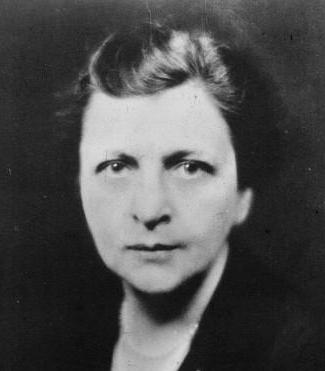
Frances Perkins
The Frances Perkins Center is dedicated to keeping Frances Perkins’ legacy alive.During this time of rampant unemployment and controversy over the American Rescue Plan of 2021, it is important to remember what she accomplished. Frances Perkins—the U.S. secretary of labor from 1933 to 1945—was an extraordinary woman who advocated for government’s role in establishing economic opportunity. She was a woman of “firsts.”
In 1919, Governor of New York Al Smith appointed Perkins to a vacant seat on the New York State Industrial Commission, making her the first woman to be appointed to an administrative position in New York state government. Her annual salary was $8,000— she was the most highly paid woman ever to hold public office in the United States.
As governor of New York, Franklin D. Roosevelt selected Perkins to become the state’s industrial commissioner, with oversight responsibilities for the entire labor department, making her the most prominent state labor official in the nation. She achieved national attention when she disputed the Hoover Administration’s prediction in January of 1930 that employment was on the rise and recovery from the Great Depression was in sight. She responded to this “fake news” by holding a press conference and revealing data from the New York Bureau of Labor Statistics that showed a steady decline in employment. And she boldly challenged the administration’s assertions: “It is cruel and irresponsible to issue misleading statements of improvement in unemployment, at a time when the unemployed are reaching the end of their resources.”
In 1933, President-elect Roosevelt appointed Perkins to serve as his secretary of labor. As a woman who knew her worth, she outlined her policy priorities: a forty-hour workweek, a minimum wage, unemployment compensation, worker’s compensation, abolition of child labor, direct federal aid to the states for unemployment relief, social security, a revitalized federal employment service, and universal health insurance. She made acceptance of these priorities a condition of her acceptance of the post. As she later put it, “I came to Washington to work for . . . the millions of forgotten, plain common workingmen.” Her policies received full backing from President Roosevelt, so Perkins took the job and became the first woman in the nation to serve in a presidential cabinet. She also made history as the first known LGBT person to serve in the U.S. Cabinet.
Perkins is quoted as saying, “The people are what matter to government, and a government should aim to give all the people under its jurisdiction the best possible life.” In this sense she was the consummate constitutionalist, promoting the general welfare and working to secure the blessings of liberty to ourselves and our posterity.
—Martha Y. Zavala